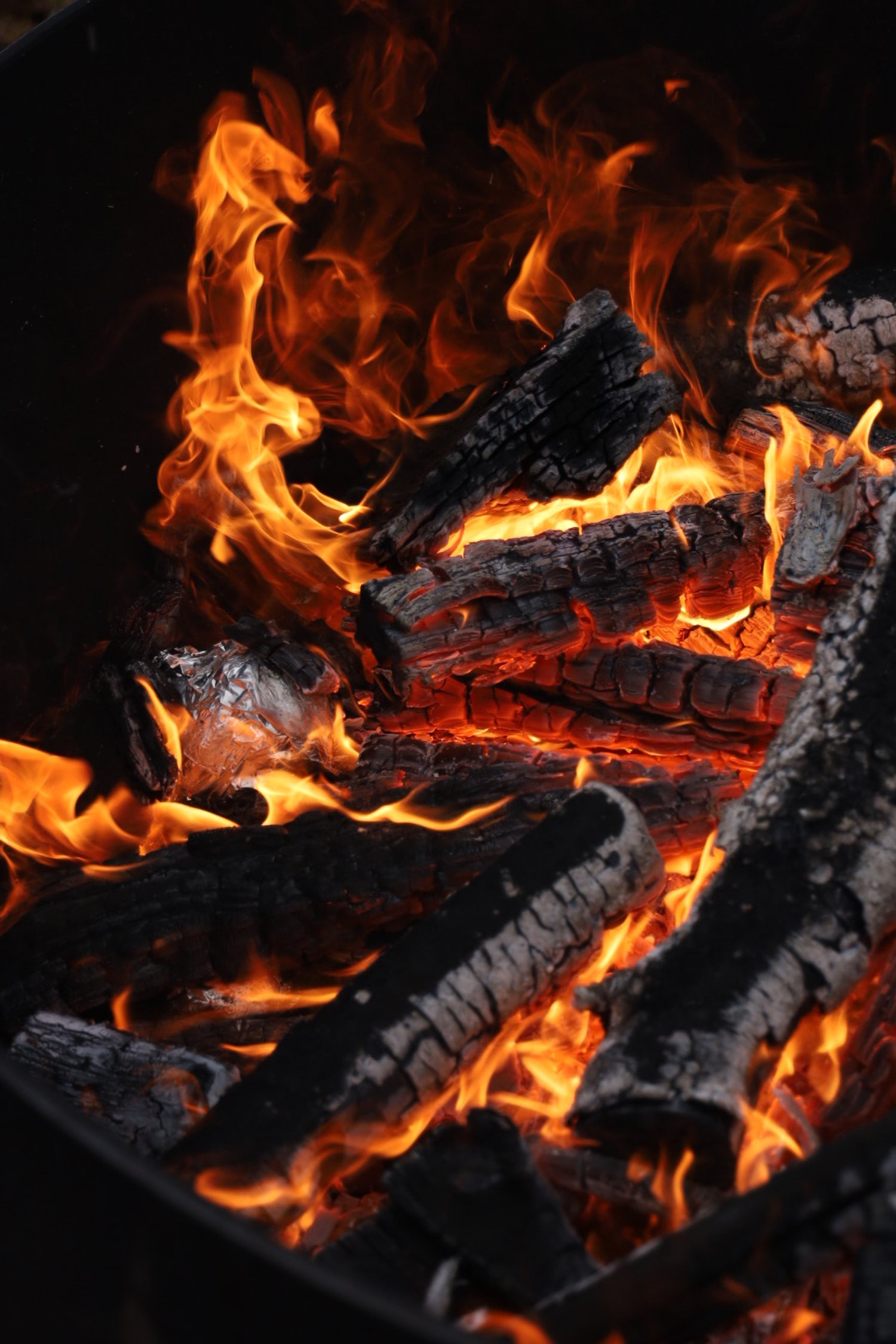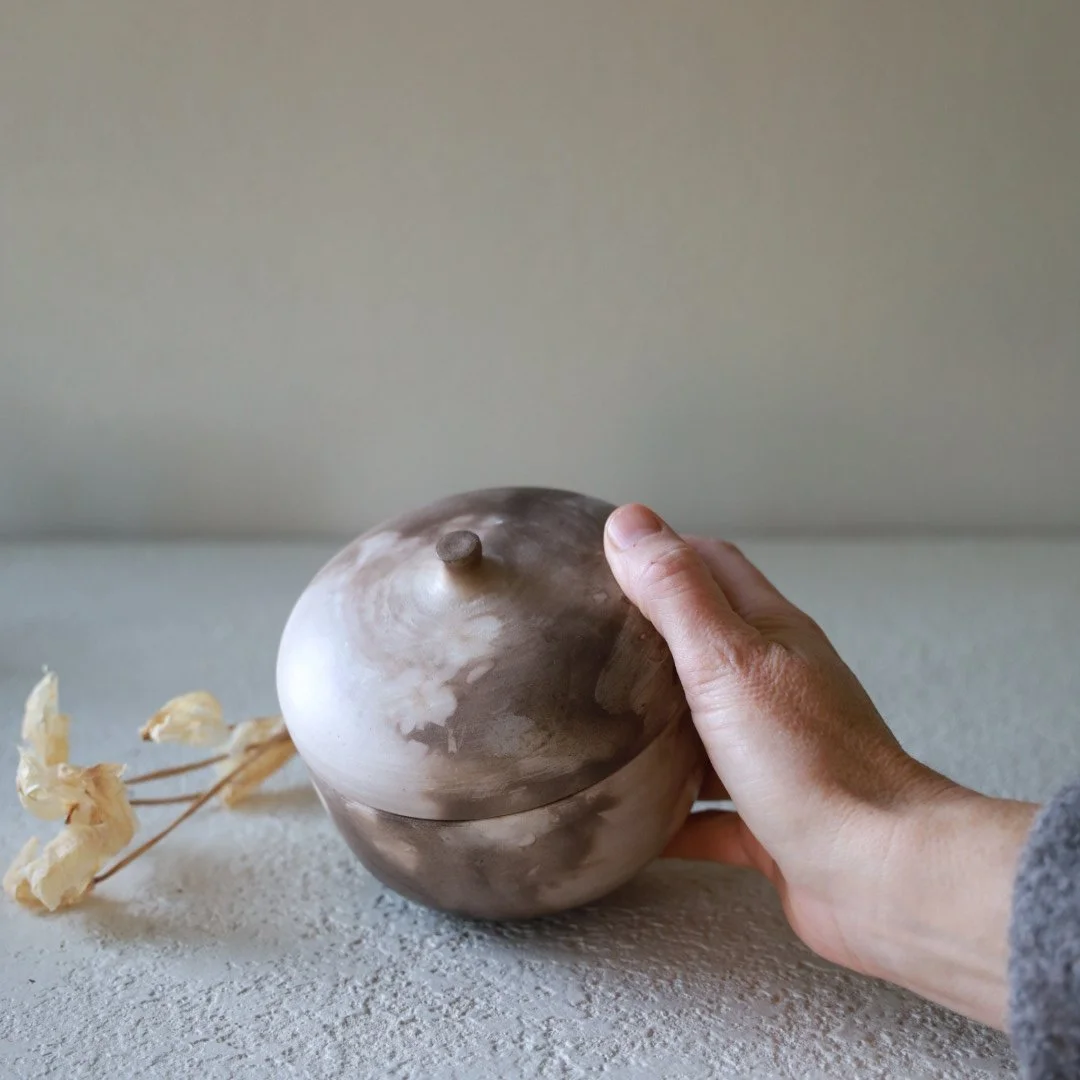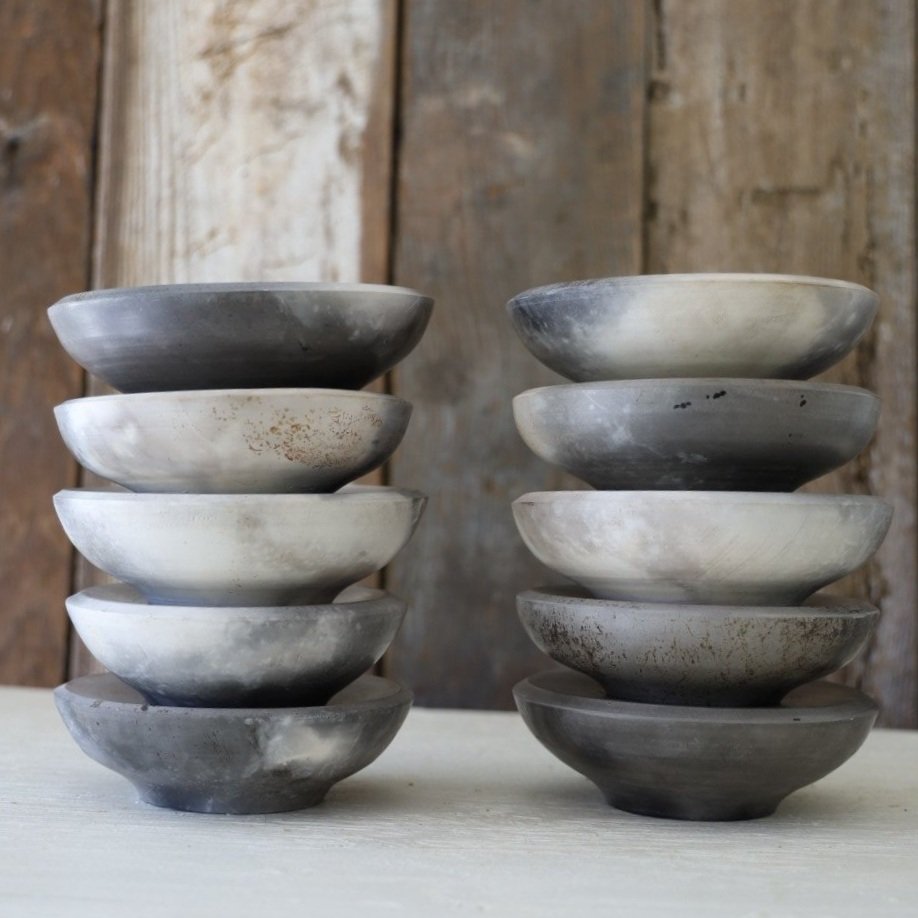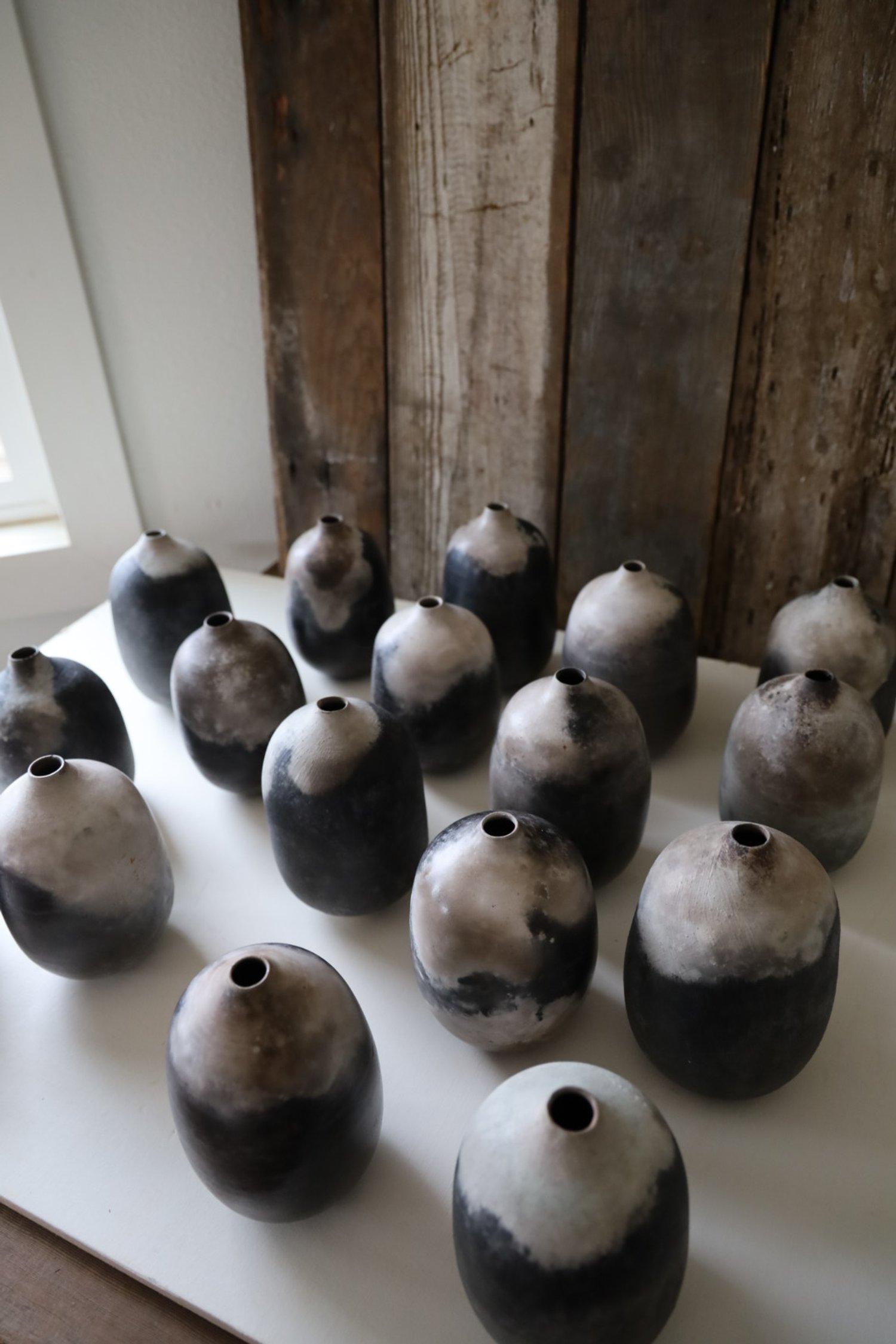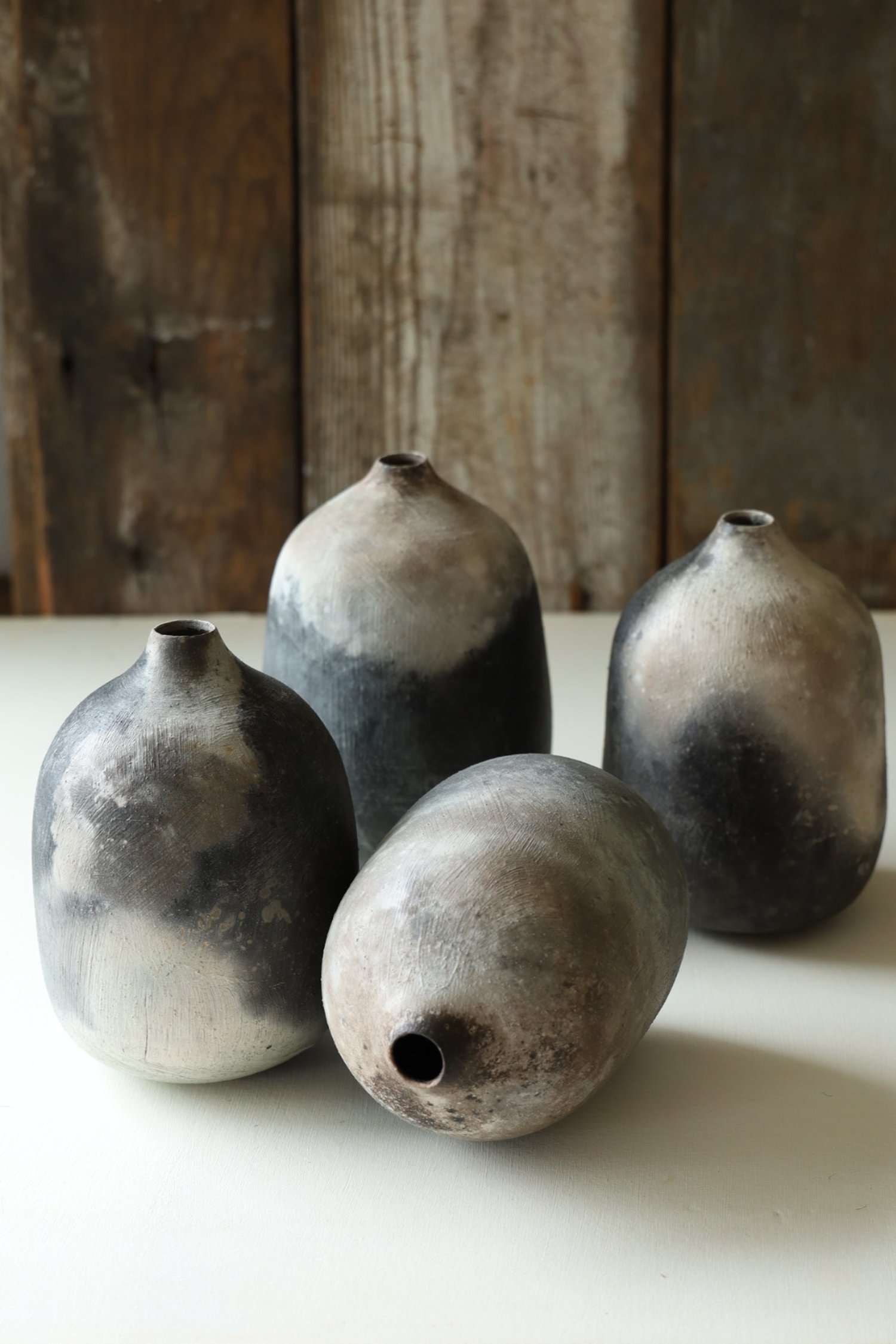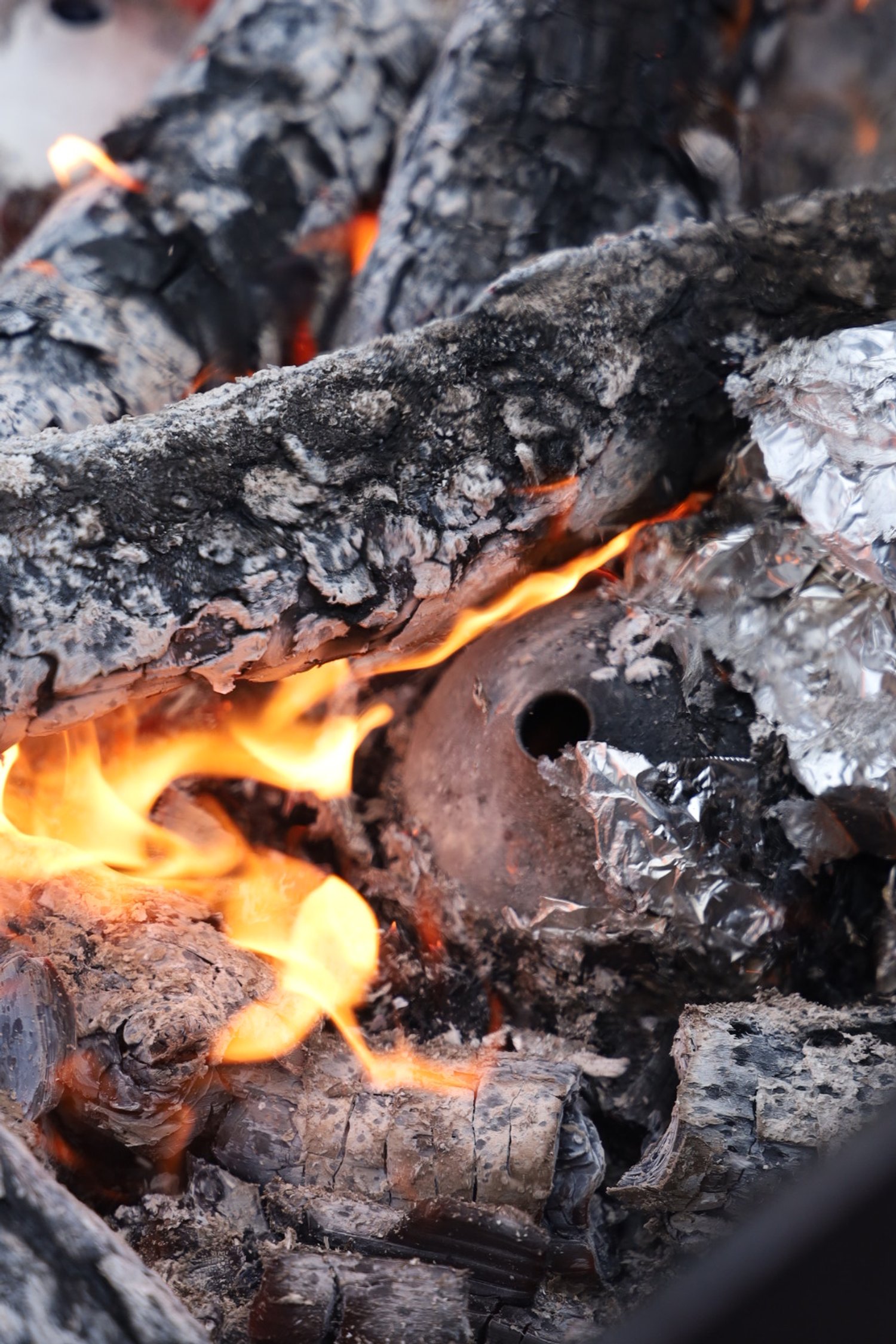Glaze Finishes
Glazes are formulated in-house and fired in an electric kiln.
Ink- The most uniform of the three glazes, developed from a different base. A satin-matte finish over black stoneware with some movement, the most translucent of the three glazes.
Plover- Matte, moderately-opaque, cool white over black stoneware. The organic movement of the glaze during application alludes to the black clay underneath, especially along rims, somewhat mimicking an atmospheric firing. The texture is less satiny that the other two finishes, more stone like.
Pipit- Warm gray, semi-translucent satin-matte. Somehow the coziest of the finishes, if there is a way that makes sense, the glaze movement and dark stoneware make an electric oxidation firing more resemble a wood or gas firing. Edges and rims can often appear flame toasted.
Pit Fire
Into The Actual Fire
Thrown in a light porcelain stoneware combined clay and fired once in the studio kiln, draped in organic material from the chicken coop: wood shavings, droppings, errant feathers, grain and seeds, clippings from the garden, and the occassional metal filings, tucked into individual pouches of aluminum then fired in the studio yard pit where the combustibles ignite to create layers and depth, marking and masking in turn, smoke penetrating bare clay leaving abstract impressions and manifesting a galaxy in a single pot
Technical Bits
-Pit fired pottery is unglazed and not fired fully so the clay is not vitrified ( mature) and therefore more open (porous).
-While I’ve not made any pit fired work that would be use for food consumption, I have taken measure to make the pieces more water tight using food grade sealant.
-The pot exteriors are waxed and buffed..




